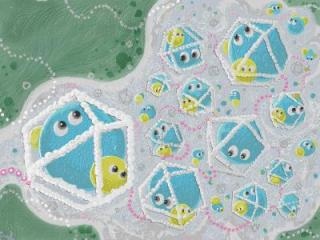Jul 13 2018
A team of researchers at the Kyoto University have formulated a new method to regulate the fabrication of soft, porous materials, thus overcoming a key challenge in materials science.
 The novel porous gel could lead wide-ranging applications. (Credit - Hayanon's Science Manga Studio)
The novel porous gel could lead wide-ranging applications. (Credit - Hayanon's Science Manga Studio)
Soft, porous, gel-like materials have a stable structure and regardless of their minute cavities have a wide range of probable applications. Building insulation, aerospace technologies, energy storage devices, and even environmental clean-ups can all gain from adding light and flexible materials.
Molecular assemblies known as metal-organic polyhedra (MOPs) are top candidates for these materials because of their remarkable porosity and shapes. However, fabricating materials from these assemblies with intrinsic and controlled porosity is still a challenge.
Shuhei Furukawa of Kyoto University's Institute for Integrated Cell-Material Sciences (iCeMS), with colleagues in Japan and Spain, discovered a way to regulate the synthesis of a porous gel via the self-assembly of MOPs using organic linkers.
They worked with a cuboctahedral-shaped MOP composed of rhodium atoms connected with strong carboxylate bonds, which gave it better structural stability. The MOPs were put in a liquid solvent with organic 'linker' molecules to activate the self-assembly process. The team learned that slowly incorporating linkers into the solution and altering the solution's temperature enabled them to control the size and formation of the spherical particles that developed.
The scientists found that small changes in the reaction conditions significantly influenced the result of the reactions. When the team incorporated a large quantity of linker molecules into the rhodium MOP solution at 80 °C and then speedily cooled it to room temperature, a gel formed. The gel was then treated with supercritical carbon dioxide. The gas replaced the liquid component of the gel, resulting in the formation of an ultralight 'aerogel'.
"We envisage that by understanding the relationship between molecular-scale geometries and the resulting macroscopic shapes, a real advance can be made towards the development of soft matter that is both permanently porous and amenable to materials processing," the scientists conclude in their research reported in the journal Nature Communications. Their findings could result in the fabrication of soft, flexible materials that have long-lasting porosity, they say.